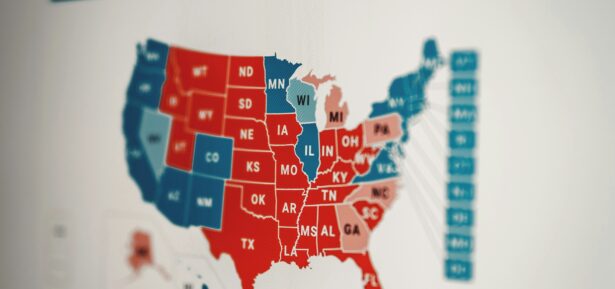The world is your oyster… shell
Every week, approximately 8,000 oyster shells are dumped onto Governors Island of New York each week for The Billion Oyster Project. Sourcing oyster shells that were served from 75 restaurants of New York, utilizing waste to help restore reefs in the New York Harbor.
The harbor once had one of the largest sources of oyster reefs in the world, but overfishing, poor water quality, and disease have damaged a majority of oyster beds in the water around Manhattan. The Billion Oyster project hopes to restore the oyster population by sourcing used oyster shells and placing them back in the harbor to promote more oysters in the future.
Oysters are not only a source of seafood but are an important part of marine ecology with adult oysters having the ability to filter 50 gallons of water daily. More oysters are providing habitat and food for other marine animals with the reef structure to help protect shorelines from waves and storm damage.
In this awesome Helping Hands article, 17-year-old Abdullah reflects on his experience volunteering for the @BillionOyster Project. Check it out below!https://t.co/hRLi9OfFR9
— KidSpirit Online (@kidspiritonline) March 22, 2020
Executive Director of the Billion Oyster Project, Pete Malinowski, explains that the past ocean conditions of New York were calmer because the oyster reefs would break up the waves along with supporting salt marshes. Now the ocean conditions are rougher because of the lacking oyster reef infrastructure.
The Billion Oyster Project formed within the New York Harbor School and started their work on Governors Island in 2010. Two years into the project, storm Sandy hit New York and devastated the city’s shoreline with waves over 12 feet high.
#SoundviewReefs is a #cleanwater effort we can look forward to! Thx to @NYSDEC funding and our partners, this oyster reef restoration project will add 500K lbs of recycled shell & 25M oysters to 5 acres of #NYHarbor. Subscribe to learn more: https://t.co/x89LjrE438 #WorldWaterDay pic.twitter.com/BgasOfr0l9
— Billion Oyster (@BillionOyster) March 22, 2020
The storm’s impact was a huge hit, leaving the city with $19 billion in damages. In 2016, the governor’s office for storm recovery started funding the Billion Oyster Project and its shell collection program.
Oysters shells won’t entirely prevent future floods or storm surges, but this project hopes that it will help New York in the future. This project will also help promote the oyster population for more sustainable fishing in the future.
The shell collection program manager, Charlotte Boesch, explains that baby oysters want to attach themselves onto oyster shells so the project needs a large quantity of shells for the best chance of success. She also goes onto say that the only way to obtain the large quantity needed in the Northeast is to recycle it from restaurants.
If a baby oyster doesn’t attach to a shell, it falls into the mud of the ocean and is not viable to mature into an adult oyster. This project also promotes sustainability as all these leftover shells would be trash wasting away in a landfill, with an estimated 30 tons of oyster shells being dumped weekly.
Collaborative effort from @BillionOyster @scape_studio and others brings together an innovative approach to addressing #climate change in NYC with #oysters! @RachCrane @CNNBusiness reporting, VIDEO– #habitat https://t.co/h1DqDFrbdy
— Zack Greenberg (@zmgreenberg) March 25, 2020
New York seafood restaurant, Oceana, goes through 1,500 to 2,000 oysters per week and they donate every single shell. All the restaurants had to do was train the staff to dispose of the shells properly for collection and they contribute to a great project.
Once the oysters are collected from the restaurants, they let the shells sunbathe on Governors Island for a year before they’re transferred to the Harbor School’s hatchery. At the hatchery, they let the oysters grow in the lab for a few weeks.
The hatchery oysters are placed in steel rectangular structures that were designed by ocean engineering students and are restored back to the water. The project’s ultimate goal is to have a future where the harbor’s ecosystem is thriving for plant and animal life.
-
In a significant legal development, U.S. District Judge Aileen Cannon has declined former President Donald Trump’s request to dismiss...
-
Major Collision Causing the Collapse of the Bridge The recent collapse of the Francis Scott Key Bridge in Baltimore,...
-
Donald Trump is on the brink of a crucial deadline in a business fraud case, with just a few...
-
Sylvia Gonzalez, a newly elected city council member in a small Texas community, was embroiled in controversy when she...
-
Is TikTok Getting Banned in the States? The United States House of Representatives has voted with bipartisan support to...
-
The 2024 Election Race Continues Between Joe Biden and Donald Trump With the 2024 general election drawing closer, President...
-
Another Successful Moon Landing Intuitive Machines, a commercial space company, has achieved a remarkable feat by landing its Odysseus...
-
Has the State of USA Improved Since Trump’s Presidency or Gotten Worse? Given the current climate of the United...
-
In a surprise speech delivered from the White House, President Joe Biden addressed the recent special counsel’s report and...
-
Is Texas Taking the Right Step Towards a Better America? The Austin Guaranteed Income Pilot, Texas’s pioneering tax-payer-funded basic...
-
Newly Released Footage Reveals Arrest at Miami Airport Newly released body camera footage reveals the arrest of 73-year-old Donna...
-
President Biden’s re-election strategy balances White House proximity with campaign focus in a unique approach to the upcoming election....



















